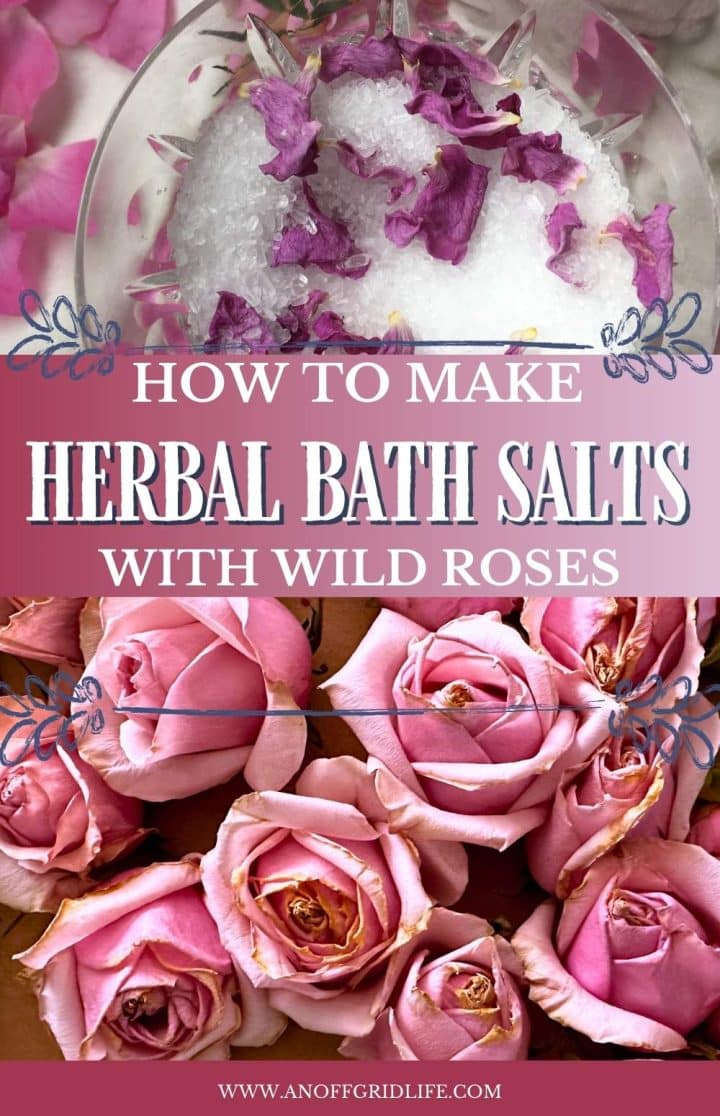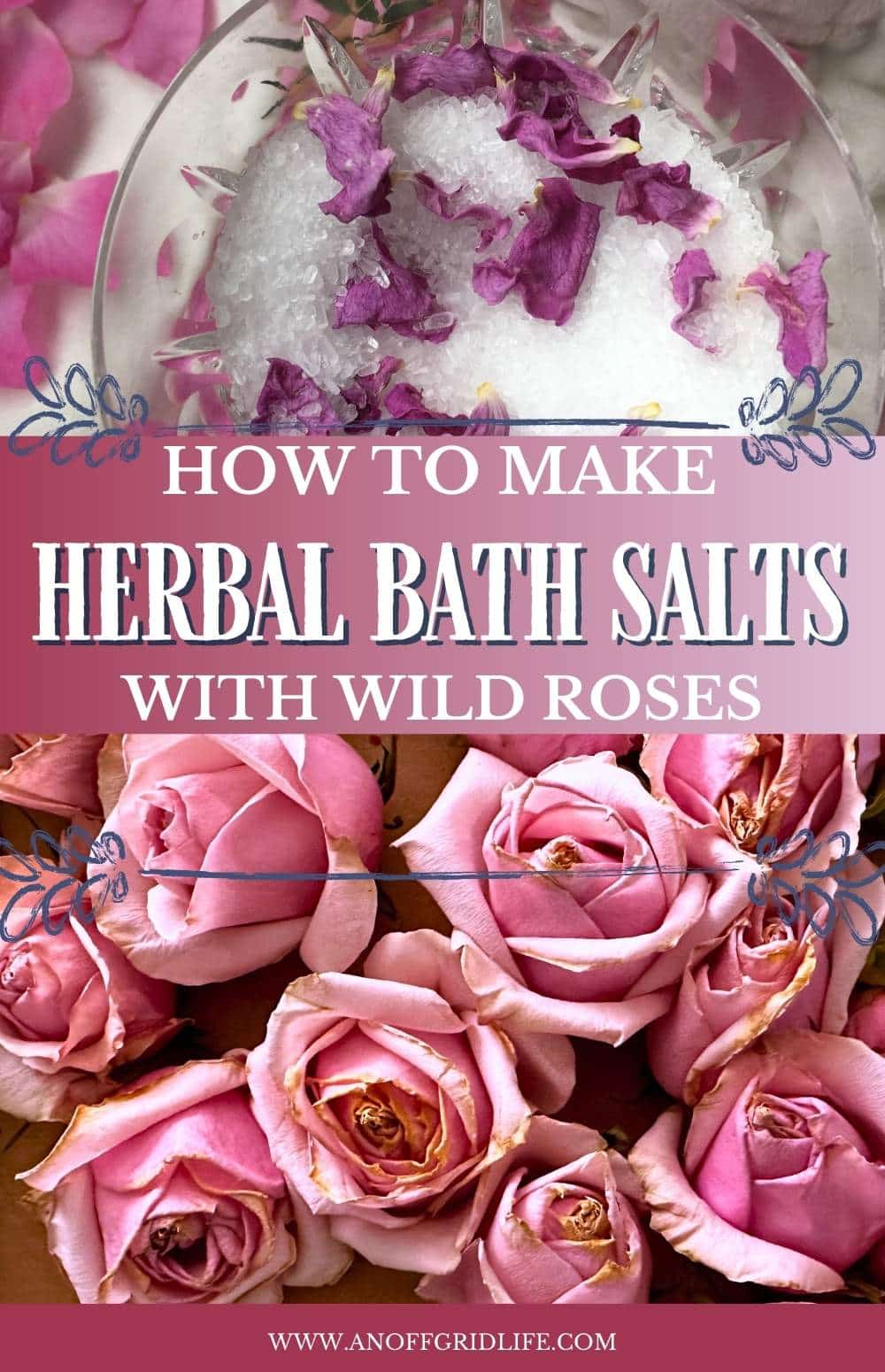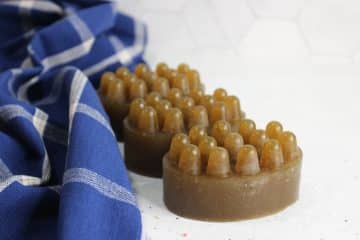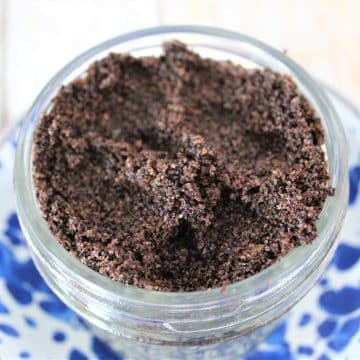Homemade bath salts are a delightful way to add some luxury to your bath time while reaping the benefits of natural ingredients. Learning how to make herbal bath salts with wild roses is a fun and rewarding activity you can enjoy with your family.
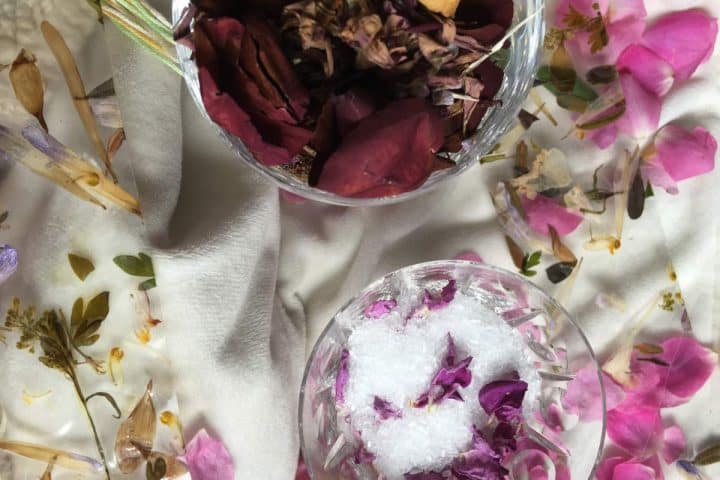
These bath salts can also make thoughtful homemade gifts. Here's a simple guide to creating herbal bath salts using wild roses.
What You'll Need
Making homemade herbal bath salts is easy and one of our favorite ways to use wildflower petals, herbs, and essential oils. After a busy day, a long soak in a hot tub helps with joint pain and relaxes sore muscles.
Over the past few years we've made all sorts of natural health and beauty products from foraged flowers and herbs, including gardener's soap.
To make your herbal bath salts, gather the following basic ingredients. You'll also need a few simple supplies.
- 12 cups fresh wild rose petals (this is the main ingredient)
- 6 cups fresh fireweed petals (optional)
- 4 cups Epsom salts
- ¾ teaspoon Geranium essential oil or another essential oil blend
- ½ cup baking soda (optional)
- ¾ teaspoon Rose essential oil (optional)
- Dehydrator OR drying screens
- Large glass mixing bowl
- 4-ounce canning jars or baggies
Gather Wild Roses
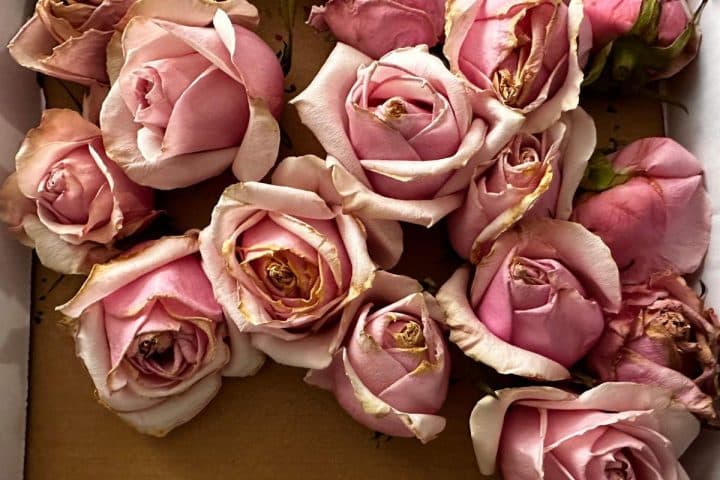
Gathering wild roses is a fun family foraging activity that even the smallest children can enjoy. If you like, add another fragrant wildflower or wild herbs or flowers that best support your specific needs. We sometimes use fireweed, as it smells nice, is a pretty purplish color, and grows wild all over the subarctic.
Over the years, we've used many dried flowers and dried herbs in different combinations. Sometimes, we just tear fresh flowers into small pieces and add them to hot bath water. Then, we add a few drops of organic essential oils (we frequently use lavender essential oil) and a handful of Epsom salts.
Pick your petals before midday, and remember to leave at least one leaf per flower for bees to pollinate. Use gentle hands, so you don't crush the petals. Watch for bees and dress for the weather.
Garble and Dry Wildflowers
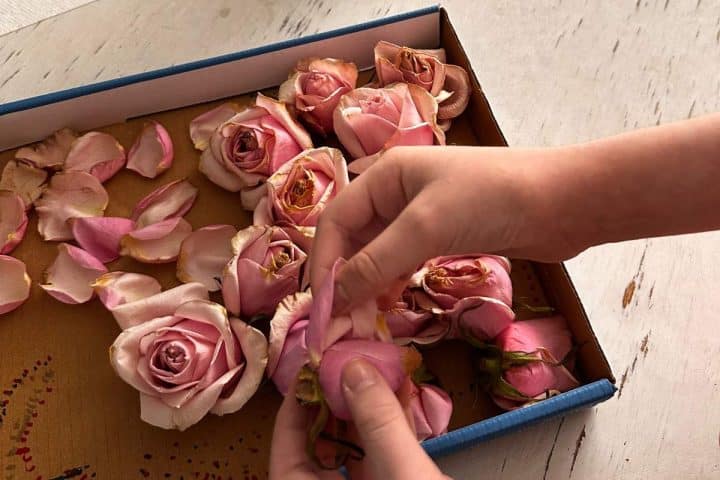
This is the fun part! While your flowers are fresh, gently take them apart so you have single petals. Remove the stems, twigs, and leaves - this is called "garbling." Next, place your petals on drying screens, a large tray, or your dehydrator.
You can make bath salt recipes with fresh petals as needed. We prefer to dry petals and make batches of bath salts to give as Christmas gifts or save for warm winter baths, depending on the time of year. Depending on your drying method and the moisture in your area, drying leaves can take several hours to more than a day. When they crumble, they're ready.
Important Tip
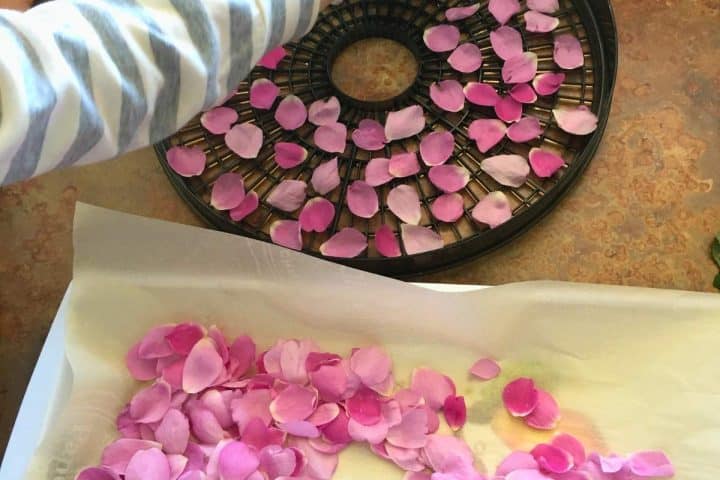
Drying petals drastically reduces the amount of wildflowers left to make bath salts. In our dehydrator, 12 cups of fresh petals turn into 3 cups of dried petals. If it's hot in your area, try drying them in a tray in a hot backseat car window.
Mixing Up Your Rose Petal Bath Salts
Now, it's time to get creative and make your own DIY bath salts recipe.. In a large glass mixing bowl, blend the Epsom salts, dried rose petals, and any other petals you fancy. If you're using it, measure your Geranium oil and Rose oil.
Adding baking soda can make the bath salts fizzy, which our girls absolutely love, but it's not a must. The essential oils will make the mixture a bit sticky at first, so it's important to work it in well. You might want to use gloves, or your hands will carry the scent of roses and geraniums for days.
Finally, portion your mixture into ten 4-ounce mason jars (the perfect size for gifting) or small cloth gift bags.
Storing Your Bath Salts
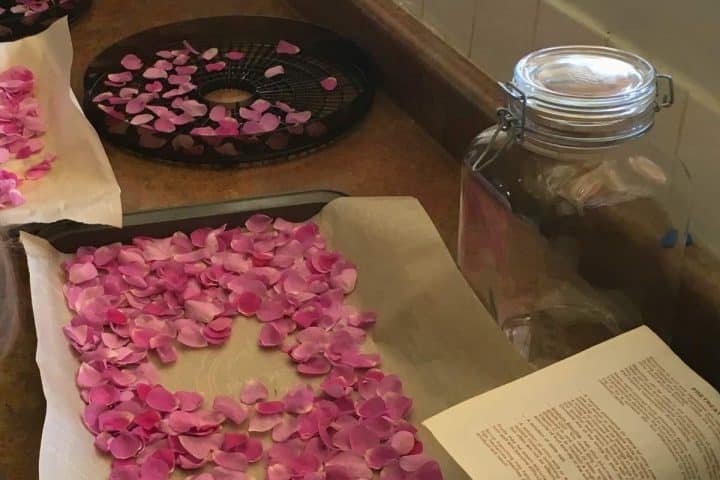
To preserve the freshness of your homemade bath salts, store them in an airtight container, such as a glass or mason jar. Keep them in a cool, dark place to extend their shelf life. Properly stored, your bath salts should last for several months.
Benefits of Herbal Bath Salts
Herbal bath salts offer numerous benefits:
- Relaxation: A hot bath with fragrant bath salts can soothe sore muscles and provide a calming experience after a long day.
Skin Health:** Salts, such as magnesium sulfate, contain minerals that can help alleviate dry skin and other skin conditions. - Aromatherapy: The essential oils and natural fragrances of rose petals and other herbs create a sensual, stress-relieving bath.
Using Your Bath Salts

To use your herbal bath salts, add a few tablespoons to your next bath. Allow the salts to dissolve fully before stepping in. Enjoy a good soak for at least 20 minutes to experience the full benefits of the herbal bath infusion.
FAQs

How long do homemade bath salts last?
Homemade bath salts can last several months if stored in an airtight container in a cool, dark place. Ensure that no moisture gets into the container to prevent clumping and degradation.
Can I use fresh petals instead of dried ones?
You can use fresh petals to make bath salts, but they will have a shorter shelf life. I recommend dried petals for longer storage and to prevent mold growth.
What are the best types of salt to use?
The best types of salt for bath salts include Epsom salt, coarse sea salt, and pink Himalayan salt. Each type offers different minerals and benefits for your skin.
Creating your own herbal bath salts with wild roses is a great way to enjoy nature's bounty and indulge in some self-care. Happy crafting!
Visit our online shop at An Off Grid Life for more wildcrafting tutorials, guides, and tips on wildcrafting with kids as part of your homeschool.
